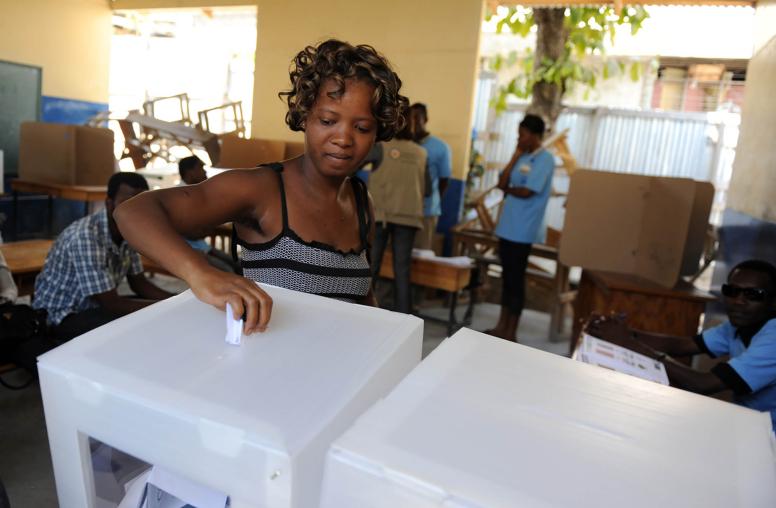Women in Religious Peacebuilding
To recognize and understand better the role of women in religious peacebuilding, the United States Institute of Peace, the World Faiths Development Dialogue (WFDD), and Georgetown University’s Berkley Center for Religion, Peace, and World Affairs launched an initiative with a symposium on July 7 and 8, 2010, at Georgetown University. This report highlights the initiative’s main findings to date.
Summary
- Women involved in peacebuilding around the world often draw inspiration and support from religious sources and organizations. However, little attention has been paid to theseactors and the religious dimension of women’s work for peace, even though the role of religion in conflict and peacebuilding has received greater attention in recent years, as has the role of women in promoting peace. This is due, in large part, to the relative invisibility of their efforts.
- Across religious traditions, women are often marginalized in formal religious spaces and rarely hold leadership positions, meaning that they do not receive the recognition that male clergy do. This marginalization, however, have freed women from institutional constraints, and behind the scenes, they have worked creatively to build peace. In addition, pathbreaking women have attained some formal recognition in religious institutions and have used it to bolster peacebuilding work.
- Women involved in peacebuilding tend to gravitate to efforts that entail sustained interfaith and intrafaith relationship building, approaching peace work from a holistic perspective that highlights the community. Women’s abilities to reach across lines of difference in tense environments, lead nonviolent protests, and mobilize communities, as well as their engagement with the theological aspects of gender roles in peace, holds the promise to change discourse and preconceptions about how religious organizations can be involved in peacebuilding work.
- Because the peacebuilding work of women is relatively unrecognized, support from outside sources, including resources and training, has been lacking. The lack of attention also has led to failures in understanding the nature of the conflict and has hidden from view potential avenues for resolving conflicts and promoting postconflict healing and reconciliation.
- To change this situation, donors and international organizations can create and support networks of women peacebuilders across religion and culture and help train local organizations and actors to better advocate their positions to politicians and government officials. Simultaneously, international actors could be better educated about the peace work that women do within faith organizations and the ways that their work could be amplified. Building bridges among women’s organizations and networks, especially secular and religiously inspired, offers considerable promise. Such efforts could strengthen existing peacebuilding efforts and improve our understanding of what can be done to create more sustainable peace in different regions.
About the Report
To recognize and understand better the role of women in religious peacebuilding, the United States Institute of Peace, the World Faiths Development Dialogue (WFDD), and Georgetown University’s Berkley Center for Religion, Peace, and World Affairs launched an initiative with a symposium on July 7 and 8, 2010, at Georgetown University. It focused on the ways in which women inspired by or linked to religious ideals and institutions worked for and maintained sustainable, positive peace. The symposium brought together practitioners, academics, and policymakers from several distinct fields and backgrounds. The investigation also involved a series of in-depth interviews with invited participants and other leaders in the field and drew on the experiences of several programs, such as the University of San Diego’s Women Peacemakers Program and the Tanenbaum Center for Interreligious Understanding, that seek explicitly to honor the peace work of women inspired by religious ideas or communities.
This report highlights the initiative’s main findings to date, building on the major themes that emerged from the interviews and from the July 2010 exchange. The interviews that formed the basis of much of the exercise are available on the Berkley Center website. The Berkley Center and USIP are working jointly to develop a knowledge resources segment of their websites to make available relevant material.
The report was prepared under the direction of Katherine Marshall and Susan Hayward. Claudia Zambra, Esther Breger, and Sarah Jackson contributed substantively to successive drafts. Input from Michael Bodakowski, Paige Lovejoy, and Deven Comen, as well as participants in the July symposium and in interviews, is gratefully acknowledged.



